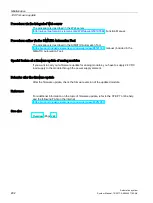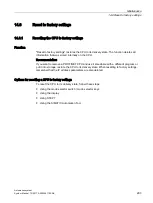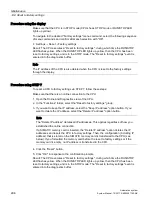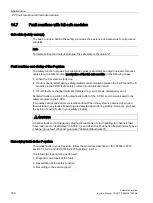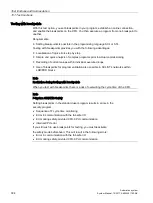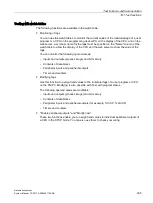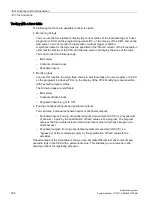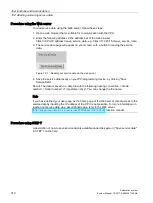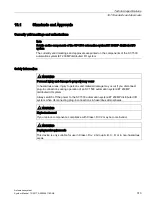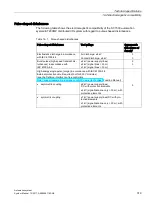
Test functions and fault resolution
15.1 Test functions
Automation system
306
System Manual, 12/2017, A5E03461182-AE
Testing with a force table
The following functions are available in the force table:
●
Monitoring of tags
You can use the force tables to display the current values of the individual tags of a user
program or a CPU on the programming device/PC, on the display of the CPU, and on the
web server. You can monitor the table with or without trigger condition.
A symbolic name for the tags must be specified in the "Name" column of the force table in
order that the display of the CPU and the web server can display the value of the tags.
You can monitor the following tags:
–
Bit memory
–
Contents of data blocks
–
Peripheral inputs
●
Modifying tags
You use this function to assign fixed values to individual tags of a user program or a CPU
on the programming device/PC or on the display of the CPU. Modifying is also possible
with Test with program status.
The following tags are modifiable:
–
Bit memory
–
Contents of data blocks
–
Peripheral inputs (e.g. %I0.0:P)
●
Forcing of peripheral inputs and peripheral outputs
You can force individual peripheral inputs or peripheral outputs.
–
Peripheral inputs: Forcing of peripheral inputs (for example %I0.0:P) is a "bypassing"
of sensors / inputs by the specification of fixed values to the program. The program
receives the force value instead of the actual input value (via process image or via
direct access).
–
Peripheral outputs: Forcing of peripheral outputs (for example %Q0.0:P) is a
"bypassing" of the complete program by the specification of fixed values to the
actuators.
One advantage of the force table is that you can simulate different test environments and
overwrite tags in the CPU with a permanent value. This enables you to intervene in the
ongoing process for regulating purposes.
Summary of Contents for Simatic S7-1500/ET 200MP
Page 1: ......

